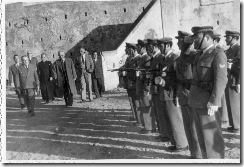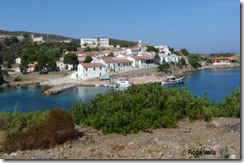Posts Tagged ‘Brigate Rosse’
-
AN ISLAND FLOATING ON A STRANGE SEA
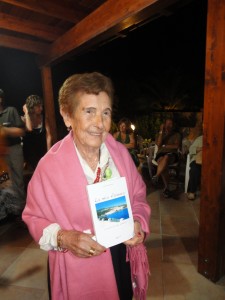 Franca Fadda Silvetti led a most unusual life. For 33 years, she lived with her family on the island of Asinara in Sardinia, Italy. At the time, the island served as a prison. Silvetti’s husband was the prison’s doctor while she was the only teacher for the island’s elementary school where all the young children attended. Trusted prisoners were allowed to roam freely around the island to work outside the prison; one of them was her housekeeper and he also took care of her children. After changing into a high security prison, the island was eventually abandoned and turned into a national park. An intriguing visit to this island led me to a book which Silvetti wrote about her memories on Asinara. Her book eventually led me to her.
Franca Fadda Silvetti led a most unusual life. For 33 years, she lived with her family on the island of Asinara in Sardinia, Italy. At the time, the island served as a prison. Silvetti’s husband was the prison’s doctor while she was the only teacher for the island’s elementary school where all the young children attended. Trusted prisoners were allowed to roam freely around the island to work outside the prison; one of them was her housekeeper and he also took care of her children. After changing into a high security prison, the island was eventually abandoned and turned into a national park. An intriguing visit to this island led me to a book which Silvetti wrote about her memories on Asinara. Her book eventually led me to her.In her book La Mia Asinara, Silvetti describes in detail her arrival on the island.
“I arrived in Asinara on 4th October 1952 with my two sons; Aldo who was 3 years old and Gian Piero who was 2. I was very young and very much in love with my husband Vindice. He had arrived some days before on the island to start his new job as a prison doctor. On his arrival, he fell in love with the island and he sent me a message which read ‘Come here, you will not regret it!’”
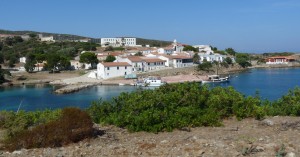 From the first moments, even before she actually stepped on Asinara, Silvetti had to learn to deal with the circumstances of a peculiar life.
From the first moments, even before she actually stepped on Asinara, Silvetti had to learn to deal with the circumstances of a peculiar life.“We went up with our luggage on the boat named Redenzione. Before we left for the island, I looked around at the other passengers. Some policemen were accompanying a group of men of different ages who wore similar clothes. The men were handcuffed and restricted by chains.”
Soon, Silvetti started her new life in a two-floor comfortable house in Cava D’Oliva. All the houses were painted white and they were constructed along a semi-circular area which looked out at the bay. Although initially concerned that prisoners were regularly in contact with the island’s inhabitants, she managed to take this new reality in her stride once her husband assured her that they were safe.
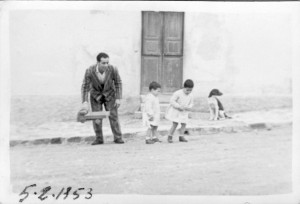 “Luigi was a young handsome Sicilian who was sentenced to 9 years imprisonment after he was found to form part of a group who worked for a renowned thief. He was recommended to us by the prison authorities to help us with the house and with our sons. During our absence, while we were at work, he took care of all the chores and he was also responsible to look after our children and to play with them. Upon our return home, we would find everything in order and the table ready for dinner. There were times when he even prepared our food since he was an excellent cook.”
“Luigi was a young handsome Sicilian who was sentenced to 9 years imprisonment after he was found to form part of a group who worked for a renowned thief. He was recommended to us by the prison authorities to help us with the house and with our sons. During our absence, while we were at work, he took care of all the chores and he was also responsible to look after our children and to play with them. Upon our return home, we would find everything in order and the table ready for dinner. There were times when he even prepared our food since he was an excellent cook.”She started to teach on the 15th October. It did not take her long to realize that teaching in Asinara was quite tiring and challenging but also very satisfying.
 “I had a small classroom which was frequented by 19 children of various ages. Since they had not attended to a kindergarden, most of the children were totally unprepared for schooling. They had no idea about rules and how to behave in groups. To make matters worse, my predecessors had all been males who had found it very difficult to adapt to the solitude of the island and they would often leave the school closed for a whole fortnight.”
“I had a small classroom which was frequented by 19 children of various ages. Since they had not attended to a kindergarden, most of the children were totally unprepared for schooling. They had no idea about rules and how to behave in groups. To make matters worse, my predecessors had all been males who had found it very difficult to adapt to the solitude of the island and they would often leave the school closed for a whole fortnight.”Some of the children lived in the far extremities of the island and they had to ride a carriage which was driven by a trusted prisoner.
“In this particular atmosphere of the island, I was also expected to cope with a form of classism which did not accept that a child of a common policeman would do better in school than the child of a higher person in authority. Often I had to use sheer diplomacy and the use of white lies to help all the children feel good with themselves.”
Prisoners formed part of the daily routine of Asinara’s inhabitants.
 “The school’s caretaker was a prisoner. Each month, the students collected a small sum of money for him which was credited in his account. It was prohibited to give any money directly to a prisoner. Daily needs were catered for by another prisoner who went to each house to take a list of the products which were required such as pasta, sugar and bread. These products would then be brought to each house by an official. In the afternoon, every house would leave a milk container on the window sill. A prisoner would collect these containers so that these will be returned to each house full of milk. Other prisoners worked in the fields with the farmers or helped to make meat products with the butchers. The prisoners were always kept under surveillance. Officials would visit places and houses where these prisoners worked at various times of the day, even when the owners were not present, to confirm that everything was in order.”
“The school’s caretaker was a prisoner. Each month, the students collected a small sum of money for him which was credited in his account. It was prohibited to give any money directly to a prisoner. Daily needs were catered for by another prisoner who went to each house to take a list of the products which were required such as pasta, sugar and bread. These products would then be brought to each house by an official. In the afternoon, every house would leave a milk container on the window sill. A prisoner would collect these containers so that these will be returned to each house full of milk. Other prisoners worked in the fields with the farmers or helped to make meat products with the butchers. The prisoners were always kept under surveillance. Officials would visit places and houses where these prisoners worked at various times of the day, even when the owners were not present, to confirm that everything was in order.”Although it did not rain much on Asinara, its products were bountiful. The inhabitants were almost totally dependent on the island’s products. Meat was provided by the animals which were bred for this reason. Fish were abundant in the transparent water of the surrounding sea. For several years, there was no electricity on the island and people had to use candles and lamps for the night.
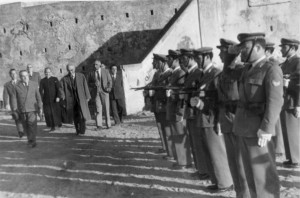 “Like everywhere else, there were good and bad moments but I can say that generally, we lived a pleasant life on Asinara. Matters changed in the 1970s when the prisons were restructured to become high-security penitentiaries to detain some of the most dangerous criminals, such as those that formed part of the Brigate Rosse, terrorists, and mafia members. This development led to the end of an era. My husband and I went on pension in 1985 and we had to leave Asinara.”
“Like everywhere else, there were good and bad moments but I can say that generally, we lived a pleasant life on Asinara. Matters changed in the 1970s when the prisons were restructured to become high-security penitentiaries to detain some of the most dangerous criminals, such as those that formed part of the Brigate Rosse, terrorists, and mafia members. This development led to the end of an era. My husband and I went on pension in 1985 and we had to leave Asinara.”My visit to Asinara was quite stirring and profoundly emotional. After reading Silvetti’s book, I felt an urge to seek her out and contact her. I was thrilled when she reached back to me and responded to my questions.

 “After living intensely for 33 years on the island, I felt as if Asinara was my own property. I wrote this book because I wanted to leave a valuable memory to my two sons and daughter Silvia and to their own children so that they would know how we lived on that island. It was a need of mine, especially after my dear husband passed away.”
“After living intensely for 33 years on the island, I felt as if Asinara was my own property. I wrote this book because I wanted to leave a valuable memory to my two sons and daughter Silvia and to their own children so that they would know how we lived on that island. It was a need of mine, especially after my dear husband passed away.”On asking how did it feel to live on a prison island, she responded, “I have never felt in danger. I felt much pity for the prisoners who were deprived of their freedom, were under constant guard, and far from their loved ones especially during feasts.”
I was curious to know whether her children were influenced by such a life?
“Each day we saw the prisoners going on their work like everyone else. It was a normal fact of life. We never saw them imprisoned but always living amongst us. They left no negative impressions on my children’s childhood.”
Did she ever feel like a prisoner herself on such a lonely island?
“No, I never felt like a prisoner. I had my own family and my own job. There were moments when we suffered some inconveniences because of bad weather which did not allow us to reach the mainland but I never felt imprisoned.”
She was 92 years old when I contacted her. She had never returned to the island.
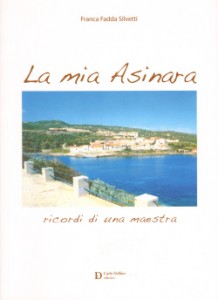 “I did not have the courage to return. Maybe, egoistically speaking, and due to the lovely memories I had on the island, it would have been better to leave Asinara inhabited by a strange population than to abandon it to its present state, to become a tourist attraction. For me Asinara is my whole life and now that I’m old, its memories help me to live a serene life.”
“I did not have the courage to return. Maybe, egoistically speaking, and due to the lovely memories I had on the island, it would have been better to leave Asinara inhabited by a strange population than to abandon it to its present state, to become a tourist attraction. For me Asinara is my whole life and now that I’m old, its memories help me to live a serene life.”Franca Fadda Silvetti passed away at the age of 94 but her memory is still much alive in her inspiring book.
(This article was published in the SENIOR TIMES – APRIL 2018 issued with The Times of Malta newspaper)
-
Sardinia’s Alcatraz
There are certain places which are hard to forget since somehow they leave a distinguished imprint on one’s memory. One of these is the island of Asinara which forms part of the territory of Sardinia in Italy. Renowned for its Albino indigenous donkeys from which the name of the island is said to have originated, this particular land is also notorious for its melancholic fate, since it has often been used as a place of seclusion, and was even turned into a penitentiary institution during its last inhabited years. Recently Asinara has been declared as a protected natural reserve and one can only visit it in the company of a licensed guide. Without any more human intervention, the island seems to be turning back to its ancient origins as nature is reclaiming back its rudimental landscape. Tourists who visit the island claim that now this zone has become a delightful gem and yet a previous inhabitant of Asinara questions whether in reality the island has been simply abandoned and left to deal with its own destiny. Surely, a visit to this island will not leave anyone untouched.
Asinara is located off the north-western tip of Sardinia. Its territory is about 52 km2 and it belongs to the government. The island of Asinara can be reached by a boat from the nearby coastal village of Stintino which is located in the province of Sassari. Guided tours can take you to visit the island through a selection of means which include bicycles, landrovers, touristic trains, kayaks and boats. Considering the heat and the fact that we were going to spend almost a day on the island, we opted for the comfortable and colourful tourist train that was scheduled to take us to the most prominent areas of the island.
The island’s vegetation and climate are typically Mediterranean but on some rocky coastal areas, one can also identify an endemic plant species of Sardinia known as Fiordaliso Spinoso. Asinara is also famous for its native Albino donkeys, most of which are regularly observed roaming freely around the island and feeding on shrubs. Yet here visitors can also have a glimpse at the typical Sardinian donkey which is generally smaller and has a brownish colour with a black stripe on its back. Other fauna includes wild pigs, sheep, goats and horses; the latter having been liberated on the island by Asinara’s prison guards once the penitentiary institutions were closed down.
Traces of human habitation on Asinara go back to prehistoric times as the site of Campu Perdu confirms. Moreover, due to its strategic central position in the Mediterranean, the island has formed part of the history of the Phoenicians, the Greeks and the Romans. Asinara was also habitually frequented by pirates, and a legend narrates that the granite castle which to date dominates the highest point of the island, had served for some time as the residence of the famous Barbarossa. In the 17th century, the island was inhabited by shepherds. However in the 19th century the island became government property and on this land, it was decided to construct a lazaretto for victims of contagious diseases. Soon after, Asinara was also selected as a place of exile for a number of prisoners. Eventually, these arrangements led the shepherds to leave the island and most of them formed the nearby village of Stintino on the mainland.
During World War 1 Asinara was turned into a prison for about 24,000 Austrian and Hungarian soldiers; 5000 of which died on the island. Then, some years later, during the 1970s, the prisons on the island were restructured to become high-security prisons in order to detain within them some of the most dangerous criminals, such as those that formed part of the Brigate Rosse, terrorists, and mafia members; the most infamous of which being Totò Riina. It was on this island too that the magistrates Giovanni Falcone and Paolo Borsellino had resided as part of the security measures that were taken during the prominent trials that were taking place during that period. Finally, in 1997, Asinara was declared as a protected nature reserve and nobody else, except the few guardians who take care of the island, were allowed to live there.
A tour around the island will reveal several of the constructions that have once served various functions during Asinara’s history. Some structures have been completely abandoned and are in ruins, whilst others such as the high-security prisons, have been restored as tourist attractions. In these prisons, visitors can experience the conditions in which the prisoners used to live wherein they were always under the supervision of the prison guards. A chamber where the prisoners could take a break from their cells was securely covered by a thick metal net. However this served to provide a view of the beautiful blue sky which though it could have offered some sort of relief, at the same time it probably increased the painful realization of living on such an idyllic island and yet being confined within those punitive walls. In the meantime, although these prisons have been unused for some years now, visitors can’t help reacting when they enter into Totò Riina’s cell. A similar strong emotion is felt on entering the building of the old prison of Fornelli wherein one can also visit the high-security cells whilst also view some old photos of a number of ‘trusted’ prisoners which used to be allowed to work in the fields and to take care of the animals on the island under the guards’ surveillance. Eventually, visitors were also led to Cala d’Oliva; the small village where Asinara’s workers used to reside.
Indeed, 92 year old Franca Fadda Silvetti still remembers the time when she used to live at Cala d’Oliva with her family on Asinara. In her autobiographical book ‘La mia Asinara: ricordi di una maestra’, she describes her 33 years residing on this island where her husband Vindice had been appointed as the prisons’ doctor and where she worked as a primary school teacher of the other workers’ young children. Interestingly, Franca has many positive memories of Asinara even though it was a penitentiary island. When I asked her whether she ever felt afraid or in danger on such a remote place inhabited by prisoners, she adamantly insisted that this was never the case. To make her point, she confirmed that some reliable prisoners were allowed to work outside the prisons during daytime and one of them used to take care of her house and to baby-sit with her young children while she was at work! Now that Franca is widowed, her nostalgic memories of the island’s beautiful environment are even stronger and yet she has never found the courage to return to Asinara from the day when all the island’s inhabitants were ordered to leave the place. Franca wonders whether the decision to leave the island in a state of abandonment was better than having allowed it to remain inhabited by a ‘strange’ population as it was back in 1952 when she put her first steps on that land which had remained so dear to her. She conceded that she decided to write her book in memory of the delightful moments that she and her family have enjoyed on the island so that even today’s readers could get a glimpse of how Asinara used to be.
Certainly those who visit Asinara will also get the opportunity to swim in the crystal clear blue sea of three particular beaches which have been selected for the use of tourists. Impressively, various sizeable fish swim confidently among the visitors as if aware that they are protected in this nature reserve. In the background, from time to time, the magnificent silence on the island is pierced by the shrill neighing of Asinara’s donkeys.
Once the visit is over and the rented boat takes you away from Asinara, you can easily feel Franca’s nostalgia for this land which can overwhelm you with different sensations. Should you desire a longer stay on this peculiar sanctuary, there is a small restaurant and a basic hostel.
(An edited version of this article was published in the Travel Section of the Times of Malta dated 6th October 2013)
Travelogue
Archives
| M | T | W | T | F | S | S |
|---|---|---|---|---|---|---|
| « Jan | ||||||
| 1 | 2 | 3 | 4 | 5 | 6 | 7 |
| 8 | 9 | 10 | 11 | 12 | 13 | 14 |
| 15 | 16 | 17 | 18 | 19 | 20 | 21 |
| 22 | 23 | 24 | 25 | 26 | 27 | 28 |
| 29 | 30 | |||||
Recent Posts
- A MATTER OF FATE
- MALTA’S PREHISTORIC TREASURES
- THE MAGIC IS IN THE DETAIL
- THE SELLING GAME
- NEVER FORGOTTEN
- Ġrajjiet mhux mitmuma – 35 sena mit-Traġedja tal-Patrol Boat C23
- AN UNEXPECTED VISIT
- THE SISTERS OF THE CRIB
Comments
- Pauline Harkins on Novella – Li kieku stajt!
- admin on IL-KARNIVAL TRAĠIKU TAL-1823
- Albert on IL-KARNIVAL TRAĠIKU TAL-1823
- Martin Ratcliffe on Love in the time of war
- admin on 24 SENA ILU: IT-TRAĠEDJA TAL-PATROL BOAT C23

